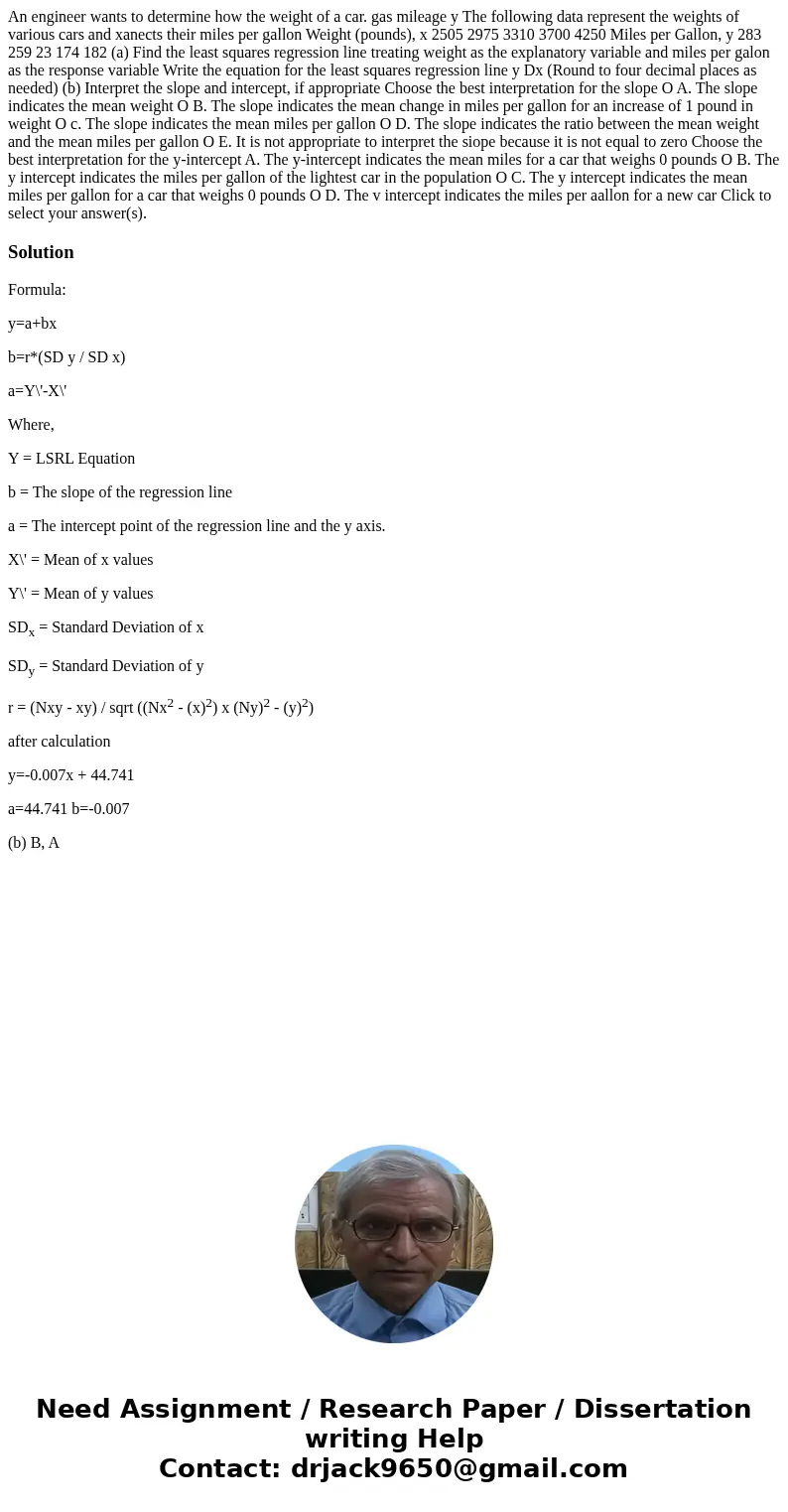An engineer wants to determine how the weight of a car gas m
An engineer wants to determine how the weight of a car. gas mileage y The following data represent the weights of various cars and xanects their miles per gallon Weight (pounds), x 2505 2975 3310 3700 4250 Miles per Gallon, y 283 259 23 174 182 (a) Find the least squares regression line treating weight as the explanatory variable and miles per galon as the response variable Write the equation for the least squares regression line y Dx (Round to four decimal places as needed) (b) Interpret the slope and intercept, if appropriate Choose the best interpretation for the slope O A. The slope indicates the mean weight O B. The slope indicates the mean change in miles per gallon for an increase of 1 pound in weight O c. The slope indicates the mean miles per gallon O D. The slope indicates the ratio between the mean weight and the mean miles per gallon O E. It is not appropriate to interpret the siope because it is not equal to zero Choose the best interpretation for the y-intercept A. The y-intercept indicates the mean miles for a car that weighs 0 pounds O B. The y intercept indicates the miles per gallon of the lightest car in the population O C. The y intercept indicates the mean miles per gallon for a car that weighs 0 pounds O D. The v intercept indicates the miles per aallon for a new car Click to select your answer(s). 
Solution
Formula:
y=a+bx
b=r*(SD y / SD x)
a=Y\'-X\'
Where,
Y = LSRL Equation
b = The slope of the regression line
a = The intercept point of the regression line and the y axis.
X\' = Mean of x values
Y\' = Mean of y values
SDx = Standard Deviation of x
SDy = Standard Deviation of y
r = (Nxy - xy) / sqrt ((Nx2 - (x)2) x (Ny)2 - (y)2)
after calculation
y=-0.007x + 44.741
a=44.741 b=-0.007
(b) B, A

 Homework Sourse
Homework Sourse